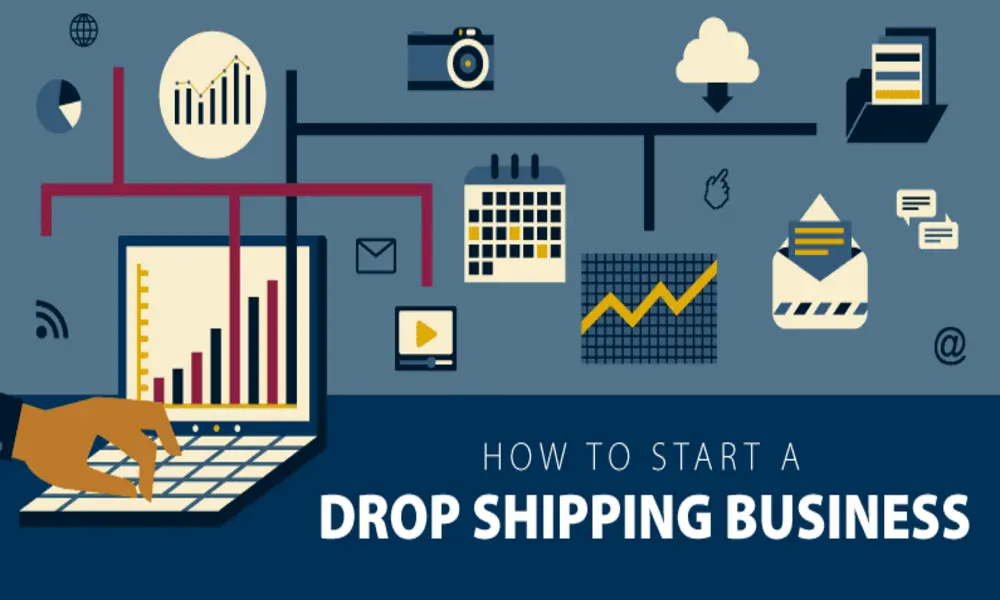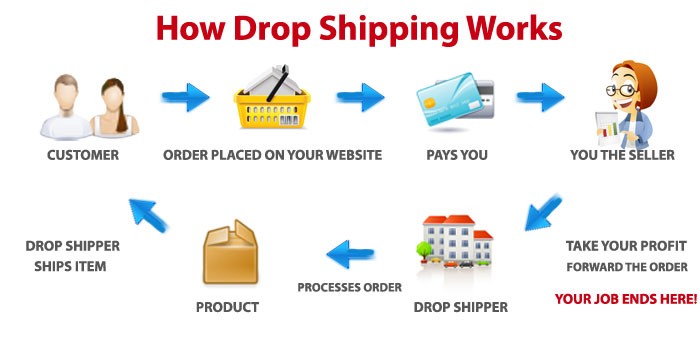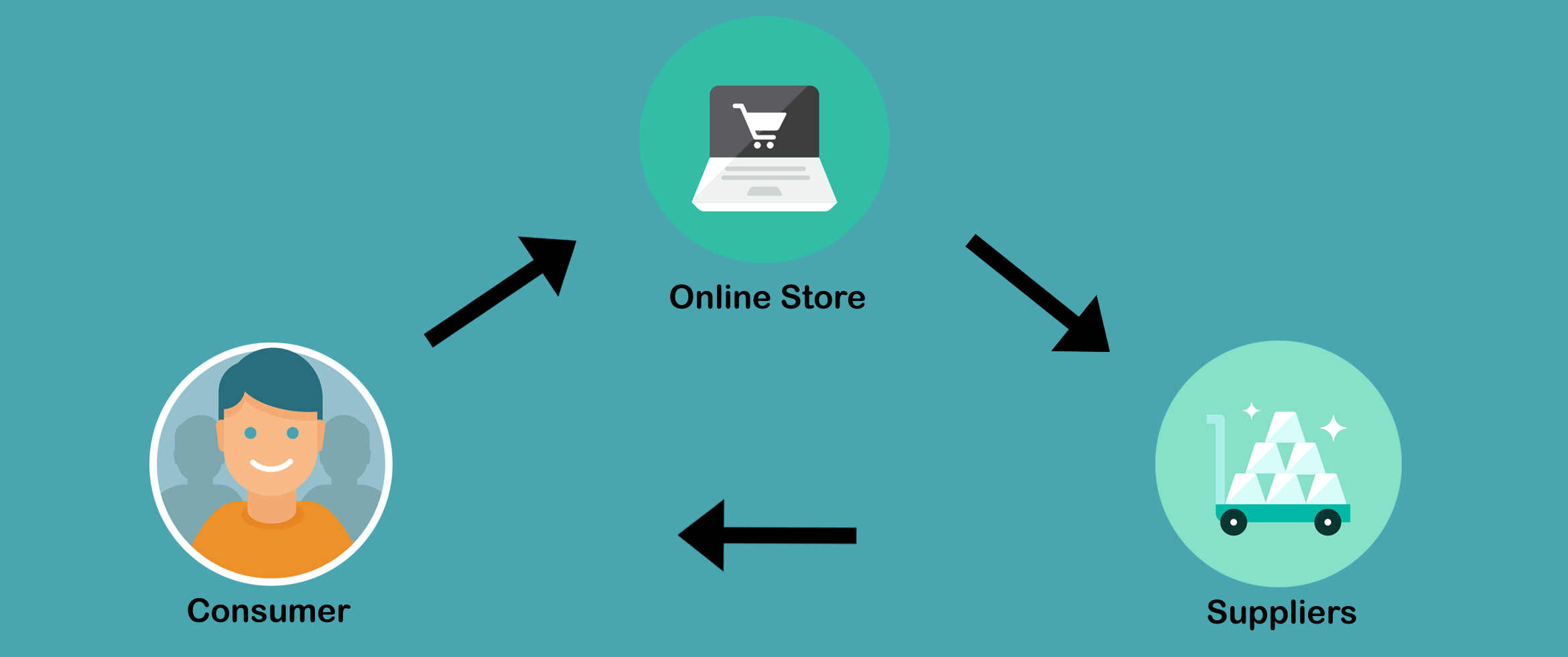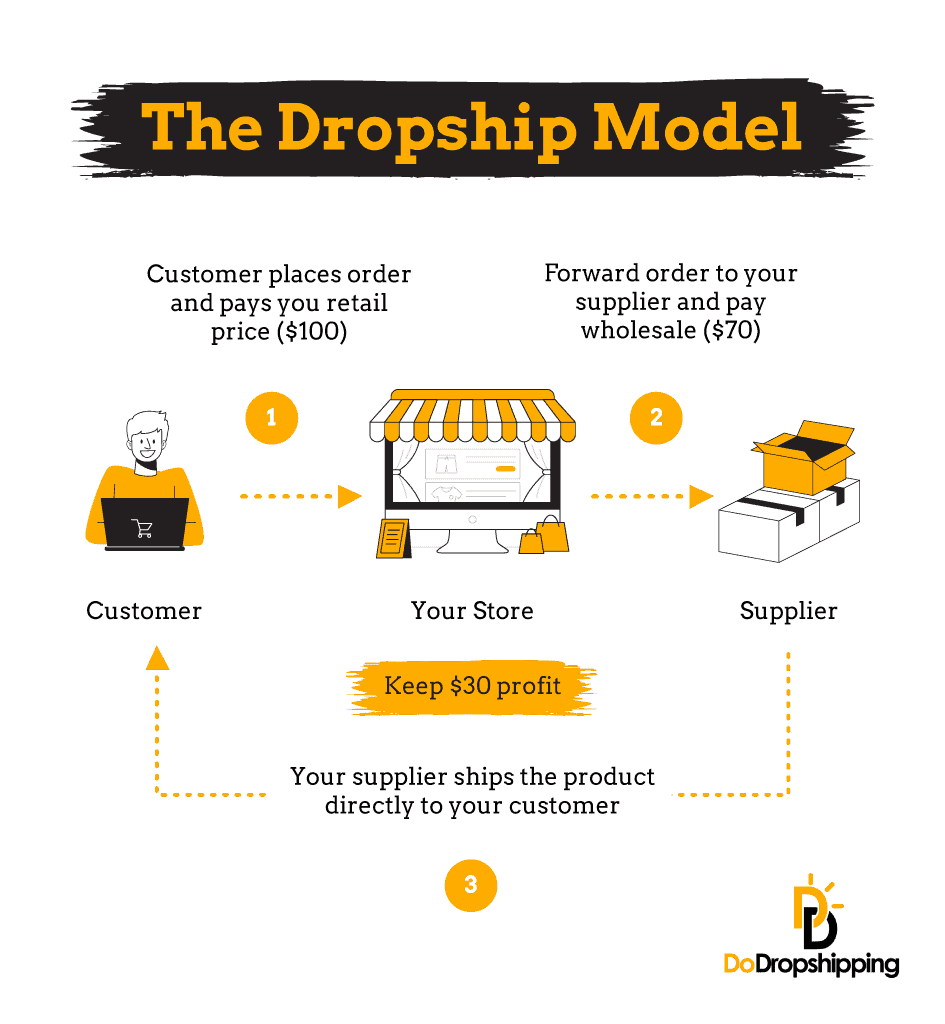Business
How To Start A Dropshipping Business: From Finding Profitable Niche To Analyzing Performance

(CTN NEWS) – Are you looking to start your own business with minimal investment and inventory management? Dropshipping might be the perfect opportunity for you. This article will guide you through the process of starting a dropshipping business, from understanding what dropshipping is to scaling your operations for success.
What is Dropshipping?
Dropshipping is a business model where you sell products online without physically stocking them. Instead, when a customer places an order, you forward the order details to a supplier or manufacturer who then ships the products directly to the customer. This eliminates the need for inventory management, warehousing, and shipping logistics.
Advantages of Dropshipping
- Low Startup Costs: Unlike traditional retail businesses, dropshipping allows you to start with minimal upfront investment since you don’t need to purchase inventory upfront.
- No Inventory Management: With dropshipping, you don’t need to worry about storing, managing, or shipping inventory. This frees up your time and resources.
- Wide Product Selection: Since you don’t have to pre-purchase inventory, you can offer a wide variety of products to your customers without the risk of being stuck with unsold items.
- Location Independence: With an internet connection, you can run your dropshipping business from anywhere in the world, giving you the flexibility to work remotely.
- Scalability: As your business grows, you can easily scale your operations without the limitations of physical inventory.
Finding a Profitable Niche
Choosing the right niche is crucial for dropshipping success. Here are some steps to find a profitable niche:
- Research Market Trends: Look for popular products with a consistent demand and analyze market trends to identify potential opportunities.
- Competition Analysis: Evaluate the competition in your chosen niche. Look for gaps in the market or unique selling propositions that can differentiate your business.
- Target Audience: Understand your target audience’s preferences, pain points, and buying behavior. This will help you tailor your product selection and marketing strategies.
Setting Up Your Online Store
To start your dropshipping business, follow these steps to set up your online store:
- Choose an E-commerce Platform: Select a reliable e-commerce platform that suits your needs, such as Shopify, WooCommerce, or BigCommerce.
- Domain and Branding: Register a domain name that reflects your brand and target market. Develop a professional logo and create a cohesive brand identity.
- Design and Customize: Customize your online store’s appearance, layout, and navigation to provide an optimal user experience.
- Payment and Shipping Integration: Set up secure payment gateways and configure shipping options to ensure smooth transactions for your customers.
Sourcing Products and Suppliers
Finding reliable suppliers is essential for the success of your dropshipping business. Consider the following when sourcing products:
- Supplier Research: Research and identify reputable suppliers that offer quality products, competitive pricing, and reliable shipping services.
- Supplier Communication: Reach out to potential suppliers and establish clear communication channels to discuss product sourcing, pricing, and order fulfillment.
- Product Samples: Request product samples to assess their quality and ensure they meet your customers’ expectations.
- Supplier Agreements: Once you find suitable suppliers, negotiate agreements that outline terms, pricing, and shipping arrangements.
Let’s say you’re interested in adding mushroom extract complex to your dropshipping e-commerce store’s product lineup. The first step in sourcing this product is conducting supplier research. You start by searching for reputable dropshipping mushroom extract complex supplier known for their quality products, competitive pricing, and reliable shipping services. After some diligent research, you come across a trusted supplier that aligns with your business requirements. Next, you initiate supplier communication to discuss the specifics of sourcing these products. You reach out to the supplier and establish clear communication channels to discuss pricing, product availability, and order fulfillment procedures. During this phase, you also inquire about the possibility of requesting product samples to ensure the quality of the mushroom extract complex aligns with your customers’ expectations.
Once you’ve thoroughly assessed the supplier and received satisfactory product samples, you move on to negotiating supplier agreements. These agreements will outline the terms, pricing structure, and shipping arrangements. This step ensures a clear understanding between you and the supplier, creating a foundation for a successful dropshipping partnership that benefits both your business and your customers.
Optimizing Product Listings
Well-optimized product listings are crucial to attract customers and drive sales. Follow these optimization techniques:
- Compelling Product Descriptions: Write detailed, persuasive, and SEO-friendly product descriptions that highlight the features, benefits, and unique selling points.
- High-Quality Product Images: Use high-resolution images that showcase the product from multiple angles, allowing customers to visualize their purchase.
- SEO Optimization: Research and incorporate relevant keywords into your product titles, descriptions, and tags to improve search engine visibility.
- Customer Reviews: Encourage customers to leave reviews and ratings, as they build trust and social proof.
Marketing and Driving Traffic
To generate traffic and increase sales, implement effective marketing strategies:
- Social Media Marketing: Leverage popular social media platforms to engage with your target audience, share valuable content, and promote your products.
- Influencer Partnerships: Collaborate with influencers or bloggers who have an audience relevant to your niche. They can help promote your products to their followers.
- Email Marketing: Build an email list and send regular newsletters, exclusive promotions, and personalized recommendations to nurture customer relationships.
- Paid Advertising: Consider using platforms like Google Ads or Facebook Ads to target specific demographics and drive traffic to your online store.
Customer Service and Order Fulfillment
Providing exceptional customer service is crucial for customer satisfaction and repeat business. Consider the following:
- Clear Communication: Maintain prompt and clear communication with customers, addressing inquiries, order updates, and any concerns they may have.
- Order Tracking: Provide tracking information for orders, allowing customers to monitor the progress of their shipments.
- Returns and Refunds: Establish clear policies for returns, refunds, and exchanges to ensure a smooth and hassle-free customer experience.
- Order Fulfillment Optimization: Continuously improve your order fulfillment process to minimize delays and errors, ensuring timely deliveries.
Managing and Scaling Your Business
As your dropshipping business grows, focus on effective management and scalability:
- Inventory Management: Monitor product availability, reorder levels, and supplier performance to avoid stockouts and maintain customer satisfaction.
- Automation Tools: Utilize automation tools and software to streamline repetitive tasks like order processing, inventory updates, and customer support.
- Expand Product Range: Continuously research and add new products to your store to keep your offerings fresh and cater to evolving customer demands.
- Outsourcing and Delegating: As your business expands, consider outsourcing certain tasks or hiring virtual assistants to manage specific areas of your business.
Tracking and Analyzing Performance
Regularly monitor and analyze your business performance to make informed decisions:
- Key Performance Indicators (KPIs): Identify relevant KPIs, such as conversion rate, average order value, customer acquisition cost, and return on investment (ROI).
- Analytics Tools: Utilize analytics platforms like Google Analytics to track website traffic, visitor behavior, and sales data for deeper insights.
- A/B Testing: Experiment with different strategies, designs, and promotions to identify what resonates best with your target audience and drives higher conversions.
- Customer Feedback: Gather feedback through surveys or reviews to understand customer satisfaction levels and areas for improvement.
Common Challenges in Dropshipping
While dropshipping offers numerous advantages, it’s important to be aware of common challenges:
- Supplier Reliability: Depending on suppliers for product quality, shipping times, and inventory accuracy can sometimes lead to unforeseen issues.
- Intense Competition: Dropshipping is a popular business model, which means you’ll face competition from other online retailers. Differentiation and targeted marketing are crucial.
- Profit Margins: Since you’re not manufacturing or sourcing products directly, profit margins may be lower compared to traditional retail models. Effective pricing strategies are essential.
- Customer Service Outsourcing: Outsourcing customer service may lead to communication challenges and inconsistent support, so it’s important to choose reliable service providers.
Tips for Success
To maximize your chances of success in dropshipping, consider these tips:
- Research and Planning: Conduct thorough research, develop a comprehensive business plan, and set realistic goals before launching your dropshipping venture.
- Continuous Learning: Stay updated with industry trends, marketing strategies, and new technologies to adapt and innovate in your business.
- Customer-Centric Approach: Focus on providing exceptional customer experiences through personalized support, fast shipping, and hassle-free returns.
- Build Trust and Credibility: Utilize customer reviews, testimonials, and trust badges on your website to build trust and credibility with potential buyers.
Conclusion on a Dropshipping Business
Starting a dropshipping business offers a low-risk opportunity to enter the e-commerce industry.
By understanding the dropshipping model, selecting a profitable niche, optimizing your online store, and implementing effective marketing strategies, you can build a successful and scalable business.
However, be aware of the challenges and continuously adapt to changes in the market to stay ahead.
With dedication, research, and strategic planning, you can turn your dropshipping business into a profitable venture.
RELATED CTN NEWS:
Native Advertising Demystified: Discover The Hidden Path To Marketing Success
5 Website Maintenance Hacks To Ensure Uninterrupted Online Success
5 Best Websites To Find Data Entry Jobs Online: Skills And Preferences

































